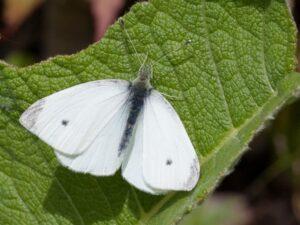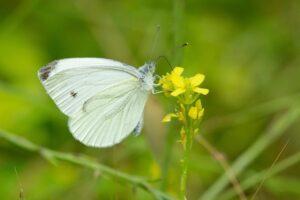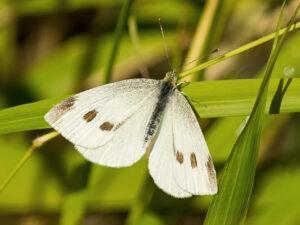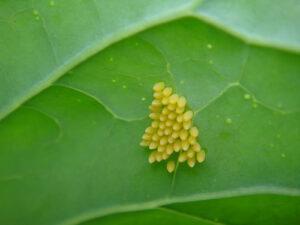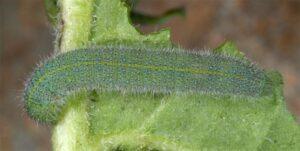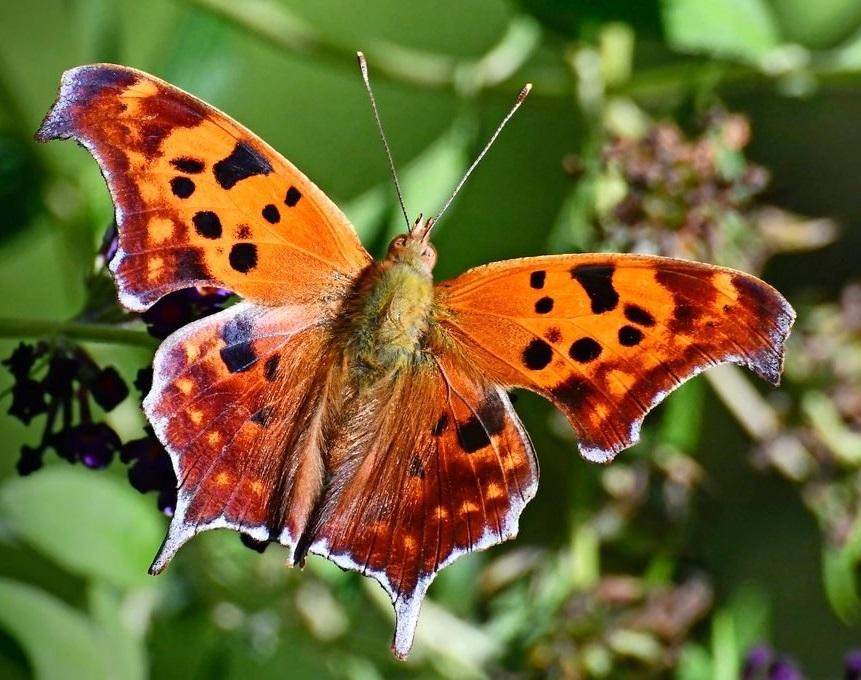Cabbage White Butterfly (Pieris rapae)
Updated on
06/10/2022The cabbage white butterfly belonging to the family of whites-and-yellows is small or medium in size. It is known by a host of names in different continents. Like, in Europe, it is called small white; in North America, people refer to it as the cabbage butterfly or cabbage white. In New Zealand, it is the white butterfly, while in other continents, it is called the small cabbage white. The caterpillar known to infest crops like kale, turnip, radish, broccoli, and cabbage is alternately called the imported cabbageworm.
Scientific Classification
- Class:Insecta
- Order:Lepidoptera
- Family:Pieridae
- Genus:Pieris
- Species:P. rapae
Conservation Status
Description and Identification
They are easily identifiable by their white body and tiny black dots on their wings. They appear closely similar to the large white butterfly – its smaller version. While their upper sides are creamy white, the underwings appear yellowish with black spots. It doesn’t appear colorful like most other butterfly species; no wonder people often mistake this plain-looking butterfly for a moth. The adults’ wingspans roughly span between 32 and 47 mm.
Distribution: Native – North Africa, Asia, Europe Invasive – Throughout North America, including parts of Quebec and Ontario
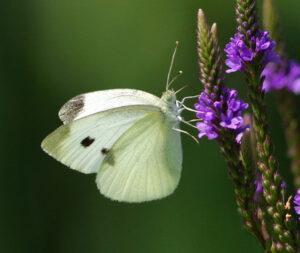
Habitat: Any open space areas like meadows, roadsides, bogs, suburbs, and gardens
Do They Bite / Sting: No
Lifespan: 1-2 weeks or 3 weeks at a maximum
Predators: House sparrows, skylarks, goldfinches (mostly prey upon the caterpillars) in urban gardens; arthropods prey upon them in rural areas
Behavior and Characteristics
Feeding
The larvae have a voracious appetite and consume their egg shell when it hatches out of the egg. Then, it proceeds to feed its host plant’s leaves. Larvae thriving in a low-nitrogen environment feed faster to utilize the nitrogen available to them as quickly as possible. In this way, they would perhaps be neglecting the other essential nutrients. In contrast, the larvae dwelling in host plants high on nitrogen wouldn’t feed at such a fast rate.
They are diurnal feeders and mostly disperse the damage they do to a plant to confuse perhaps their predators that rely upon visual cues. They would in no time move from one leaf to the other or from one part of the leaf to another. Though the cabbage white butterfly’s larvae adopt a camouflaging technique as a defense mechanism against predators, they don’t hide under the leaves during the day. Instead, one could see them basking in the sun for most of the day.
The adult cabbage white butterfly species identify the flowers during foraging using olfactory and visual cues. They mostly prefer yellow, purple, and blue flowers over other colors. Another trait is the consistency maintained by adults, as they mostly visit flowers they have already experienced in the past.
Mating and Reproduction
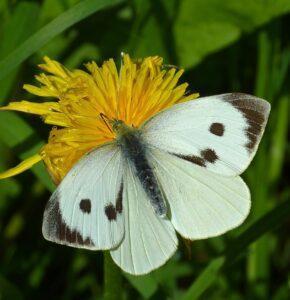
When the male spots a female butterfly, the former motions in a zigzag way around her until she lands on the ground. The male then holds the female’s closed forewings using his legs, spreading his wings. The male butterfly then makes a short flight with the female hanging beneath him. After the mating, the female lays eggs on the leaves of the host plants, particularly those containing mustard oils which she identifies conveniently.
Selecting host plants
Most of the searching or selecting of host plants is done by the female right after mating. The female identifies a suitable habitat first and then locates the vegetation patches containing the host plant. Her search is confined to open areas, and she often avoids shaded woodlands or other cool habitats even if the host plants remain available. Moreover, the female doesn’t indulge in oviposition during rainy or overcast weather. After landing upon a host plant, the females move their forelegs rapidly across the leaf’s surface. In this way, she is perhaps checking the texture, as they prefer smooth surfaces over rough ones.
Life Cycle
1. Egg Stage
The oblong-shaped eggs, resembling a football, appear white or cream but become yellowish later with twelve longitudinal ridges.
2. Larva Stage
The larvae have a bluish-green body with small black spots and a black ring encircling the spiracles. They even have yellow dashes running across laterally, alongside a yellow line intersecting the center. The instars of the larva are identifiable by comparing the shape of their head. In the first two instars, the head is entirely black. In the third instar, the front part of the head is yellow though the rest of the head appears black. In the last two instars (fourth and fifth), the whole head is black, while each eye has a greenish-yellow dot. The caterpillars mostly stay in the leaves’ undersides, barely seen to predators.
3. Pupa Stage
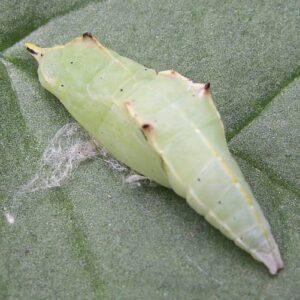
The pupa’s color may be brown, mottled-gray, or even yellow. Their head cone appears large while the abdomen remains vertically placed.
4. Adult Stage
The adult butterflies fly during the day, except early morning and evening. While making individual flights, they can travel as much as 12 km. The females fly 0.7 km daily, moving 0.45 km from the starting point.
Damage done by the Cabbage White Butterfly Larva
The larvae dig a round hole outside the leaves and then dig into the center, making them unsuited for the market.
Getting Rid of the Cabbage White Butterfly
One way of controlling the cabbage white butterfly population is by introducing natural enemies. The braconid wasps and flies parasitize the cabbage white butterfly larvae. Spraying insecticides on the affected plants is one of the chemical control measures that one may adopt. However, use the insecticides cautiously, only where needed, as increased application could harm the plants.
Source
butterfly-conservation.org, freepik.com, keepinginsects.com, flickr.com, ukbutterflies.co.uk, thegardenvirtuoso.wordpress.com, pyrgus.de, globalnetacademy.edu.au




